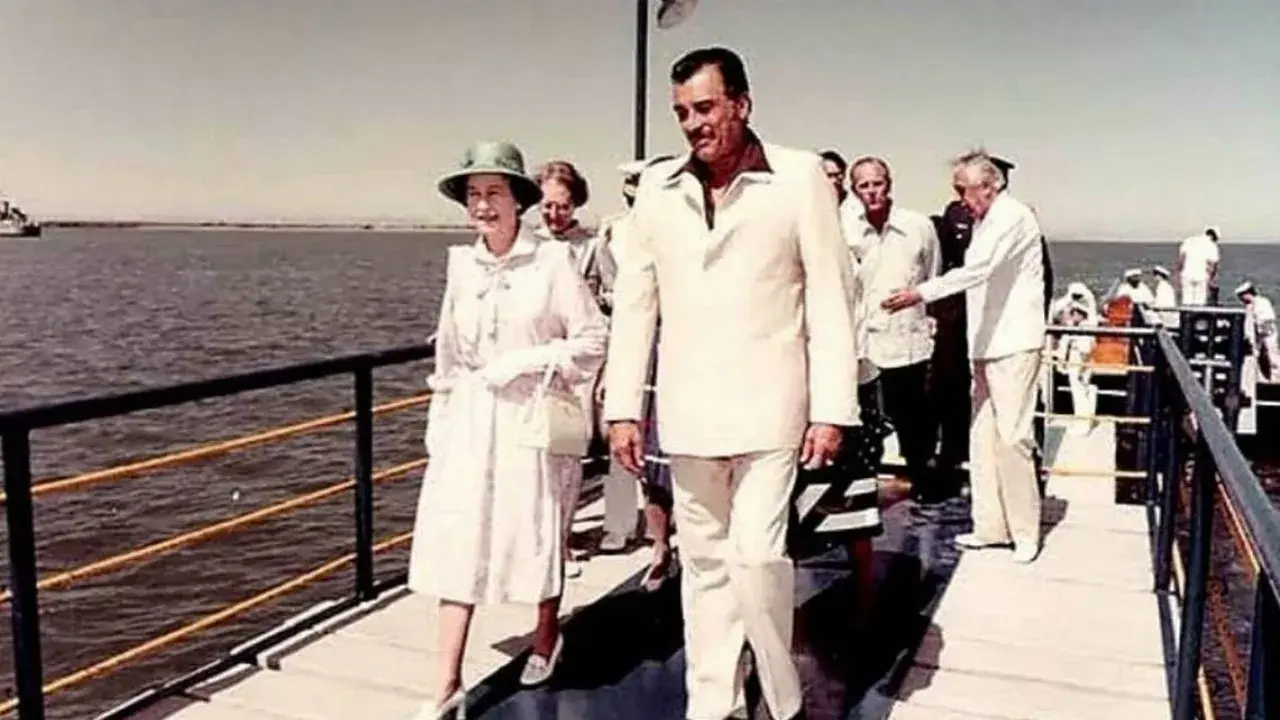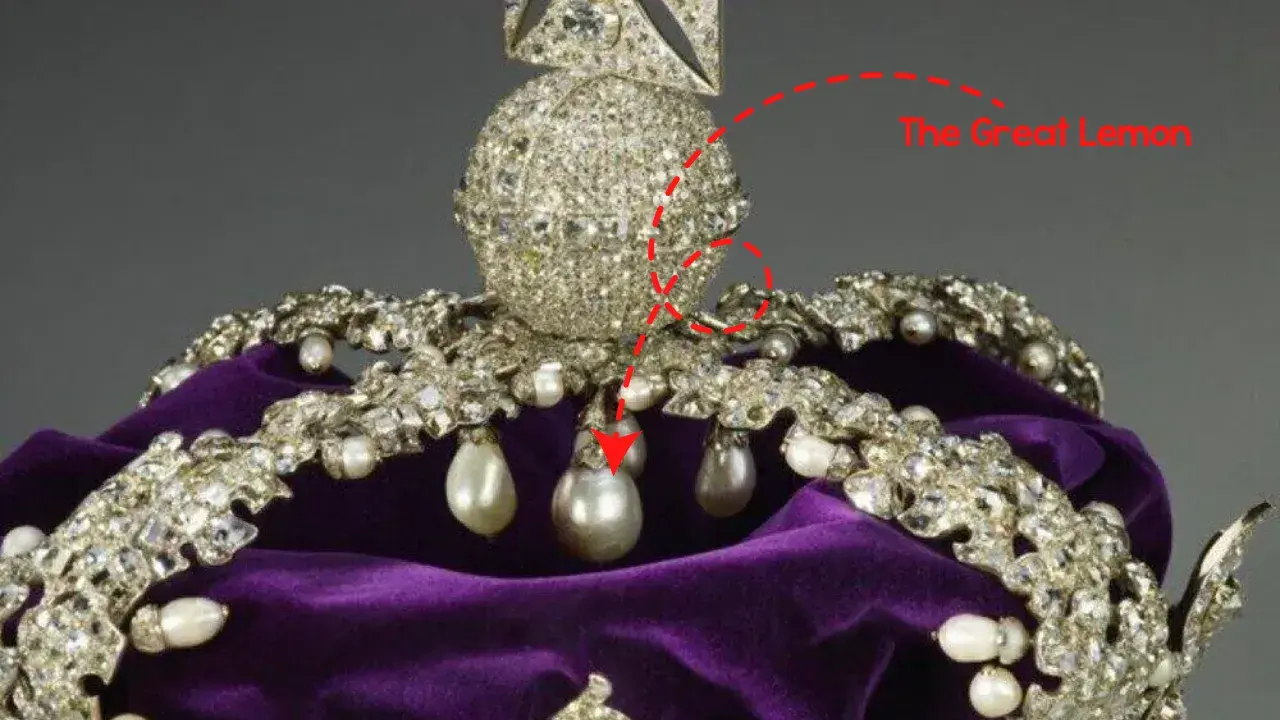Unveiling the mystery: Why did Queen Elizabeth make her way to La Paz?
By Arthus • Posted April 23 • 2024.
The story goes that in the year 1883, when the pearl industry was booming in the city of La Paz, a diver dedicated to this very task—swimming deep to extract pearls from the sea bed—found an enormous pearl, much larger than any other that had been discovered. He then handed it over to the company owner, who was astounded and delighted by the pearl and named it in honor of his daughters, Carmen and Adelaida, if I remember correctly, thus the pearl came to be known as Carmenlaida. The story also tells that instead of simply selling it, the company owner decided to display it for years until the British ambassador in Mexico saw it and immediately offered a large sum to buy it, impressed by the beauty and size of this magnificent pearl. It seems the owner did not accept the offer, and later gifted it himself to the then King of England, Edward VII, who was also amazed and immediately ordered his jewelers to work on it for inclusion in the royal crown. It was named The Great Lemon, because it was the size of a lemon and had a vibrant color similar to that fruit.
These events happened more than 140 years ago, so these types of stories often become blurred with details; some say that the divers did not work for the company, but sold it to them, or that they were not actually the owner's daughters, but his sisters, or that the British ambassador was actually in the United States. Over time, details fade, but the fact that remains is that a huge pearl found in La Paz indeed adorns the royal crown for over a century.
Thus, The Great Lemon was incorporated at the front of the British royal crown, where 14 teardrop-shaped diamonds were added to enhance the beauty of the pearl found in La Paz years ago. This crown passed from King Edward VII to his brother King George V and over time would also pass to King Edward VIII, who, as history teaches us, abdicated in favor of his brother George VI, who upon his death passed the crown to his young daughter Elizabeth, who was crowned in 1952 and wore it until her death. The crown then passed to the new King Charles III.
You might also be interested in:
The Great Lemon accompanied Queen Elizabeth for more than half a century and the English crown for over a century since King Edward VII. This enormous pearl has witnessed significant historical moments, and if it could speak, the stories it would tell! One such story would be precisely when Queen Elizabeth visited La Paz, Mexico, in 1983, exactly a century after the pearl was found in the beautiful crystalline waters of La Paz. This visit was to commemorate this fact, as the queen wanted to see the place from where The Great Lemon, which had adorned the crown worn by her father and the entire line of kings up to Edward VII, had been extracted. It might sound a bit curious to travel thousands and thousands of miles just to see where a pearl that adorns a family heirloom came from, but hey, she was the queen, and I suppose such curiosities are satisfied without much trouble.
Of course, the visit was also promoted as a recognition of La Paz and to strengthen ties between the UK and Mexico, as all visits by dignitaries are always promoted or embellished to make them look better. This apparently was not a State visit, as I found no record that the then-Mexican President De la Madrid accompanied the queen during her visit to La Paz; it seems that only the state governor appeared. Regardless, in the city of La Paz, it was a significant event, still talked about today, and depending on who tells it, they might exaggerate a bit more or a bit less, but the people of La Paz will always be very proud that their city has produced such incredible pearls, one of which has been adorning the English royal crown for more than a century.
The visit to La Paz, Mexico, by Queen Elizabeth, may she rest in peace, to see the place from which the most magnificent pearl of her crown originated and to commemorate a century since its discovery, was an event that greatly impacted La Paz. At that time, the city was barely noticeable on the global or Mexican tourist map, but for a few days, it became the focus of attention due to the visit of the then Queen of England. We must not forget that even now, with communications and technology so advanced and available, this beautiful city sometimes seems not to receive the attention it deserves. More than 40 years ago, it was truly unknown, even in Mexico, where at that time the most visited destination was Acapulco, now in clear decline, and Cancun, a fishing village, was just a budding tourist destination.
In conclusion, for most people of La Paz, knowing that from the waters of their seas came an extraordinary pearl that adorns one of the most important symbolic objects in the world for over a century is a source of pride and confirmation that God has greatly blessed this city with its extraordinary natural beauty and riches, not to mention its extraordinary marine biodiversity. However, I can't help but think that all that industry, all that wealth created from the exploitation of pearls, ended decades ago due to overexploitation. The good news is that now there are oyster farms that extract pearls in a more sustainable way, and we hope that someday, they will announce they have cultivated a pearl that rivals the beauty and size of The Great Lemon, the magnificent pearl that adorns the English crown and for which Queen Elizabeth visited La Paz more than 40 years ago.
To see more incredible pictures, go to the Pinterest board for this article: Click

Tastes of La Paz.

